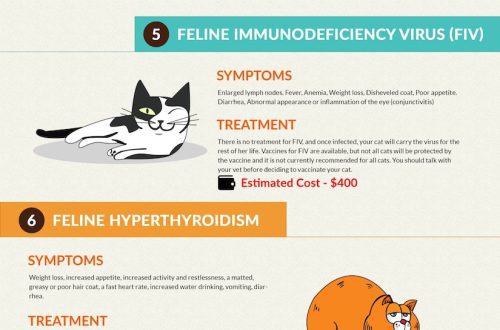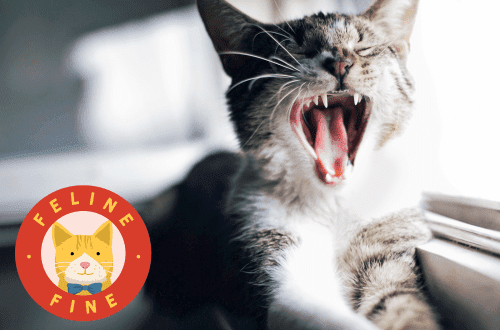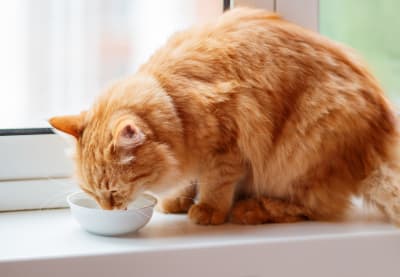
Mastitis in cats
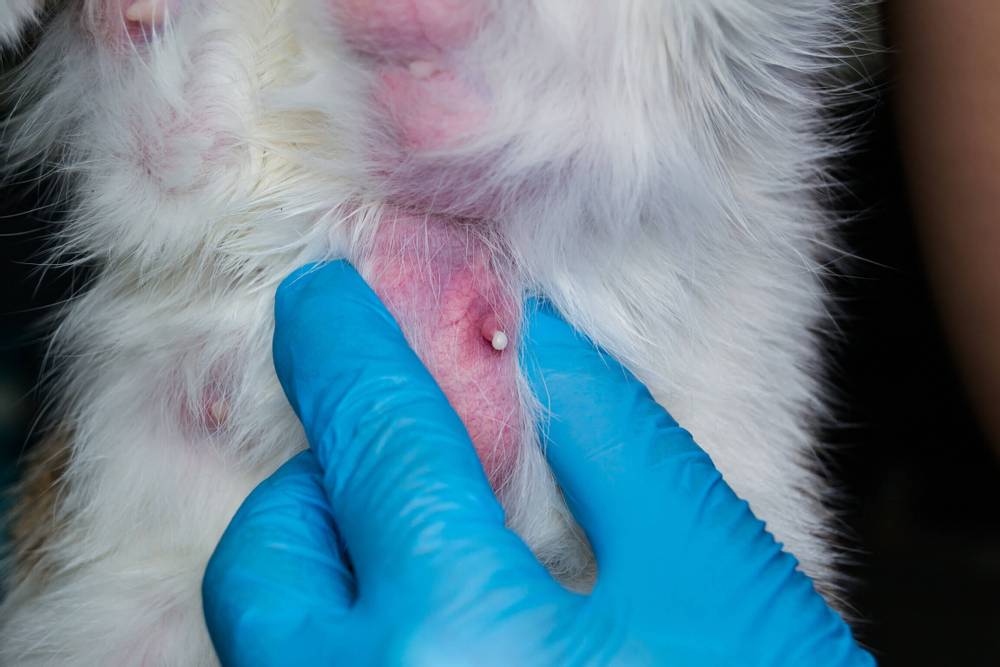
Contents
Mastitis in a lactating cat: the main thing
Most often, mastitis can be found in young lactating cats, less often in older cats and cats.
Mastitis can occur both imperceptibly for the owner and the cat itself, and with pronounced clinical symptoms.
The diagnosis of “mastitis” can be made on the basis of a general examination of the animal, but studies will be required to clarify the nature of the inflammatory process.
With the correct and timely diagnosis, treatment is not difficult.
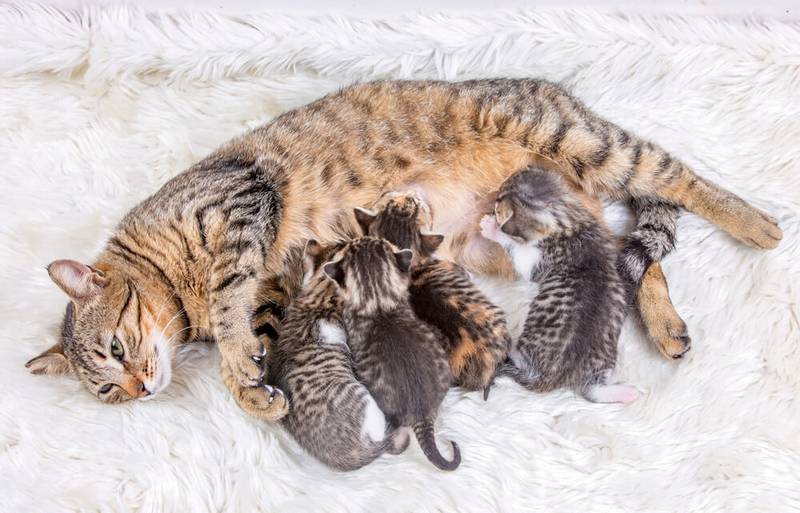
Types of mastitis
lactation
Lactational mastitis develops shortly after childbirth, during the feeding of kittens. At this time, the mammary gland is in the phase of its most active functioning. A large number of cavities appear in the mammary gland, which are filled with milk. These cavities are surrounded by fatty tissue. The vascular network is actively growing. All this is a favorable environment for the development of pathogenic microflora. It also contributes to the development of mastitis lactostasis, that is, milk stagnation. Milk for some reason (few kittens, a lot of milk) is not evacuated from the mammary gland quickly enough and stagnates. In such milk, the risk of developing a foreign infection also increases. Waste products of bacteria can lead to fermentation of milk, the formation of clots. These clots can block the milk passages and lead to even more stagnation.
Non-lactating
This form of mastitis occurs in non-pregnant cats and cats. The cause may be injuries in the area of the mammary gland, the development of deep infection of the skin, adipose tissue and other nearby tissues, the use of hormonal drugs.
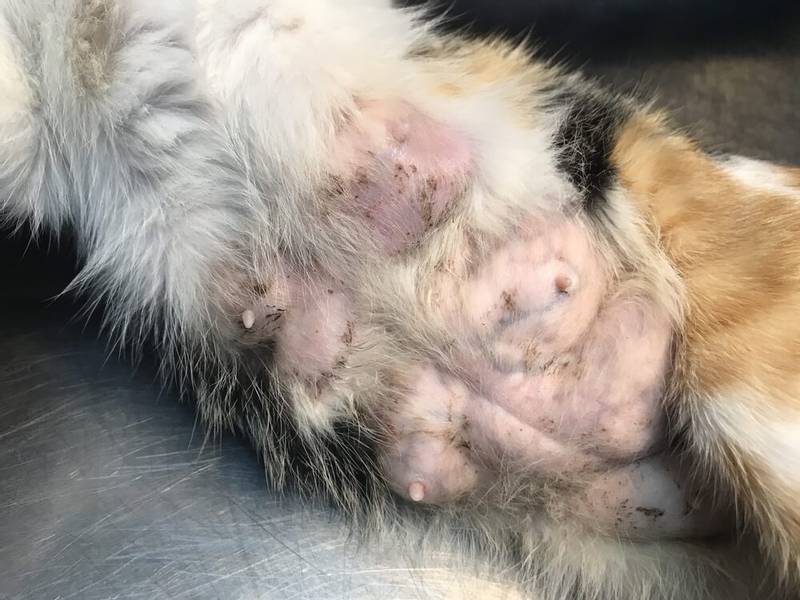
Photo of mastitis in a cat
Acute
It is manifested by bright clinical symptoms: discoloration of the skin on the mammary gland, pain, swelling, and an increase in local temperature. The cat may or may not show signs of distress. Milk may be red-brown, yellow-green, or remain white.
Chronic
Often, the only symptom of chronic mastitis may be the unwillingness of kittens to suckle their mother. The cat may not show any signs of anxiety.
Catarrhal
If you feel the mammary glands, you can find small seals. After feeding kittens or expressing milk, these balls disappear on their own. This course does not cause pain in cats, high body temperature and other changes. The main reason lies in the stagnation of milk. This condition can also be called mastopathy.
Serous
The mammary gland becomes enlarged, swollen, dense. During probing, the cat may express pain, and there may be an increase in local temperature. If you try to express milk, then a clear liquid will stand out first, and after it – milk. Flaky inclusions may be present in milk.
Fibrinous
The gland is even more enlarged in volume, very dense. When touched, the cat expresses serious dissatisfaction, you can hear sounds resembling a crunch. With such a sound, fibrin films that surrounded the ducts of the mammary gland and glandular tissue are destroyed. An increase in the size of the lymph nodes, an increase in the overall body temperature can be noted. Along with milk, flakes and films are released.
Hemorrhagic
This form of mastitis is characterized by hemorrhages in the breast tissue and in adjacent tissues. The mammary gland is enlarged, painful. Milk becomes pink or red, may contain blood clots.
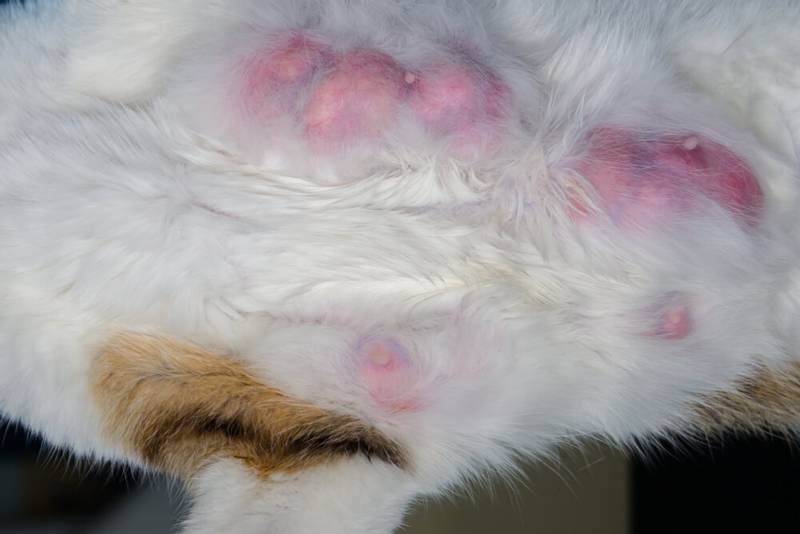
Purulent
The mammary gland in a cat is extremely painful, very dense. The skin may become pink or red. During the palpation, the cat shows strong displeasure. It can be noted purulent discharge from the nipples with a characteristic odor. Lymph nodes may be enlarged. The general health of the cat may be unsatisfactory, she may be lethargic, refuse to eat.
Abscessing
Occurs in the absence of treatment of purulent mastitis. Inside the mammary gland, cavities are formed that are filled with pus. Breast tissue begins to melt due to the vital activity of bacteria.
Gangrenous
Such mastitis develops if anaerobic bacteria join the pathogenic microflora. They very quickly destroy the tissues of the mammary glands, causing necrosis. You may notice a fetid odor, a change in skin color to brown or black. Inflammation and infection move to the tissues surrounding the mammary gland. If left untreated, with this form of mastitis, the cat has serious complications, it can die from sepsis.

Diagnosis of mastitis
Making a correct diagnosis (mastitis) begins with taking a detailed history. If this is a cat that has recently given birth, you need to find out how the kittens feel, whether they eat willingly, and whether they show signs of anxiety. It is also necessary to assess the condition of the cat itself, measure its temperature, palpate the mammary glands, assess the local temperature, swelling, density, skin color, soreness, and the nature of the excreted secret.
Of the methods of laboratory diagnostics, blood tests are examined. In the clinical analysis, an increase in leukocytes, lymphopenia can be detected. With a pronounced process, a shift of the leukocyte formula to the left can be detected. In the biochemical analysis, there are no characteristic changes for mastitis, in some cases an increase in transaminases may be detected, in an extremely serious condition, kidney indicators may be increased due to infection in them.
To assess the nature of the secret secreted from the mammary glands, a cytological examination is performed. With it, you can detect the presence of blood cells, inflammatory cells, bacteria in milk. It is also necessary to carry out sowing of milk to identify the type of pathogenic microorganism and titration to antibiotics. Healthy animals also have some bacteria in their milk, but an overgrowth would indicate infection.

Complications
The main complications of mastitis include the development of an abscessed or gangrenous form. With such forms of flow, the risk of damage to other tissues around the mammary gland (skin, muscles) increases. Milk becomes completely unsuitable for feeding kittens, they must be transferred to a mixture – a substitute for cat’s milk and fed by hand. Treatment of such forms of mastitis may include surgical intervention to wash the pus and install a drainage system, remove necrotic tissue. If the mammary gland is affected entirely, a complete excision of the breast tissue may be recommended. If left untreated, the cat may die due to sepsis.
How to express milk?
For effective treatment of mastitis, milk stagnation must be prevented. Along with milk, foreign bacteria are also eliminated. If it has been recommended to remove the kittens from the cat, or if they cannot cope with the volume of milk, it is necessary to pump it.
Wash hands thoroughly.
If the cat is very active, it will require the help of another person to fix it. The cat can be put on its knees with its back to you, or fixed on a flat surface on its side. You can use blankets or towels to cover the cat and avoid injury from claws and teeth.
Carry out a gentle massage of the mammary glands. It is necessary to do this without obvious effort, but try to stretch the dense slices.
Grasp the mammary gland with your index and thumb and gently squeeze until drops of milk appear.
If the discharge of milk in this way is difficult, physical force should not be used. It is worth contacting your doctor and clarifying whether you are doing everything right.
You can also use a breast pump for women to express milk with mastitis, but its power may be too high for cats. Then you should make a breast pump yourself. To do this, you need a syringe with a volume of 20 ml. It is necessary to cut off with a knife its upper part (the one where the needle is attached). Burn the cut edges over the fire so that they do not scratch the cat’s skin. Next, the cut part must be leaned against the cat’s mammary gland and pulled on the piston so that a vacuum is formed. If you did everything right, then milk will begin to be sucked into the syringe.
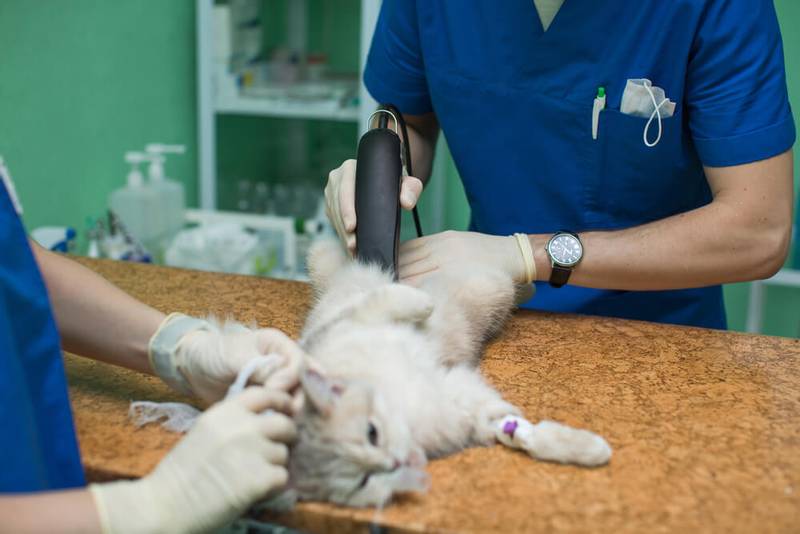
How to feed kittens with mastitis?
If the form of mastitis allows the cat to continue to feed the kittens on its own, then no change in their diet is necessary. If a doctor has advised to temporarily or completely stop feeding kittens with milk, you must continue to feed them manually. For this, special mixtures are used – analogues of cat’s milk. The use of infant formula or other types of milk is possible only as a last resort, it has been proven that such kittens grow much worse and have more various diseases. This is due to the fact that the composition of the milk of different animal species varies greatly.
Treatment of mastitis in a cat
The main drugs used to treat mastitis in cats are antibiotics. If the cat continues to feed the kittens, it is necessary to use those antibiotics that can be given to small kittens. Usually these are antibiotics from the beta-lactam group. If other types of antibiotics are required, the kittens will need to be weaned and formula fed. The use of anti-inflammatory drugs is also associated with the risk of side effects in kittens. In some cases, the use of local anti-inflammatory drugs in the form of compresses or ointments may be indicated. Drugs that stop lactation may also be used.
In severe cases of mastitis, surgical intervention is used, dead tissue must be removed, in an extreme situation, the mammary glands are removed entirely. In critically ill cats, a venous catheter is installed, infusion therapy is carried out, and inpatient observation is recommended.

Prevention of mastitis
In order to prevent mastitis, it is necessary to observe good conditions for keeping a cat: a clean room, not too low or high temperature, a minimum of stressful situations. It is necessary to feed a cat in a balanced way; there are special lines of food for pregnant and lactating cats. It is recommended to feed kittens for at least 2-3 months. By this age, kittens are able to eat food other than milk on their own, and the risk of lactostasis decreases in the cat.
During pregnancy and after the birth of kittens, it is recommended to keep in touch with the attending physician and contact at the first sign of malaise. In non-pregnant cats, it is recommended not to use hormonal drugs to stop estrus. If the cat is non-breeding and is not planned for breeding, it is better to carry out a planned castration, which significantly reduces the likelihood of various diseases of the mammary glands, ovaries and uterus, including cancer.
When the first symptoms of mastitis appear in a cat, you should immediately consult a doctor.
12 May 2021
Updated: July 24, 2021



